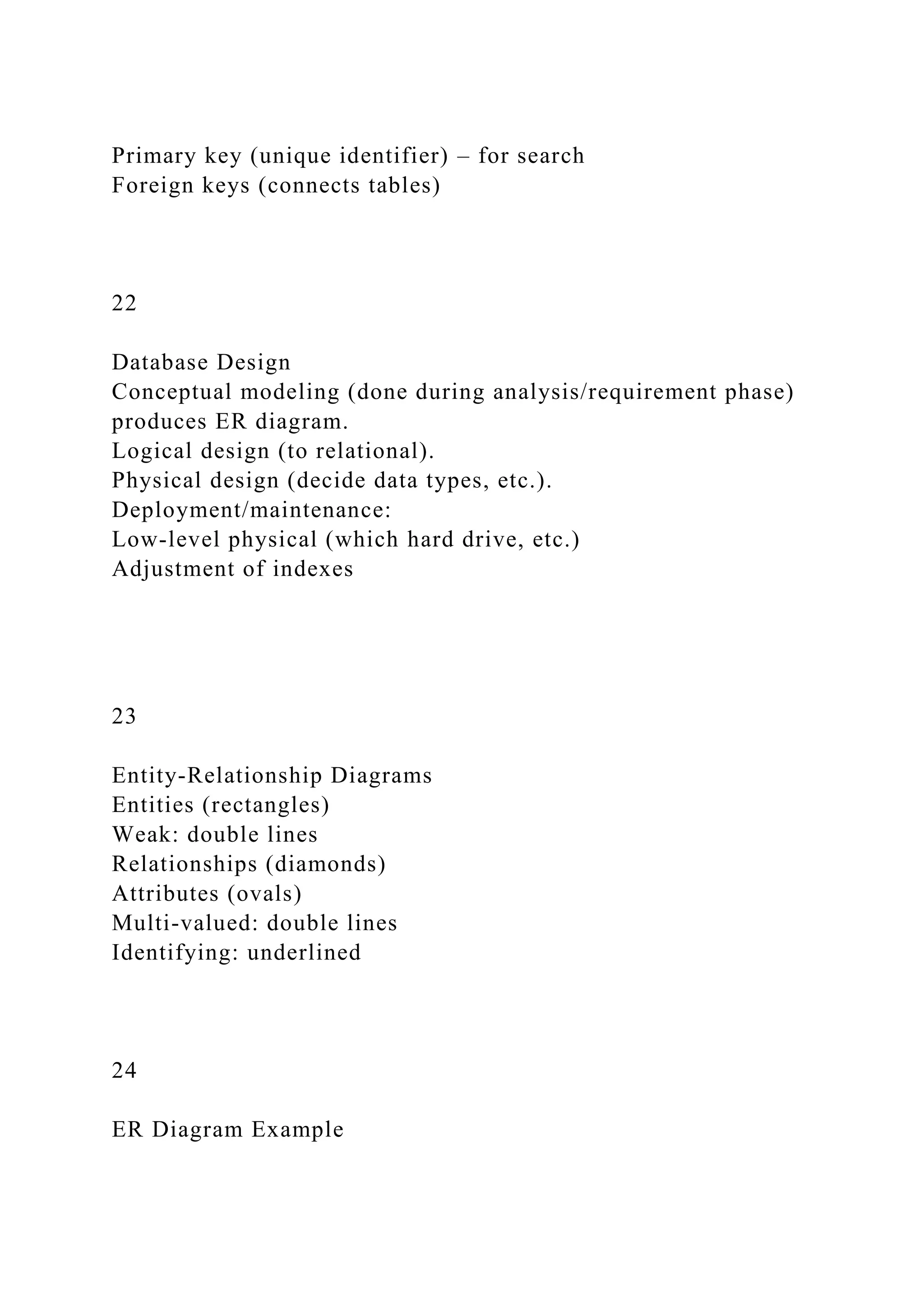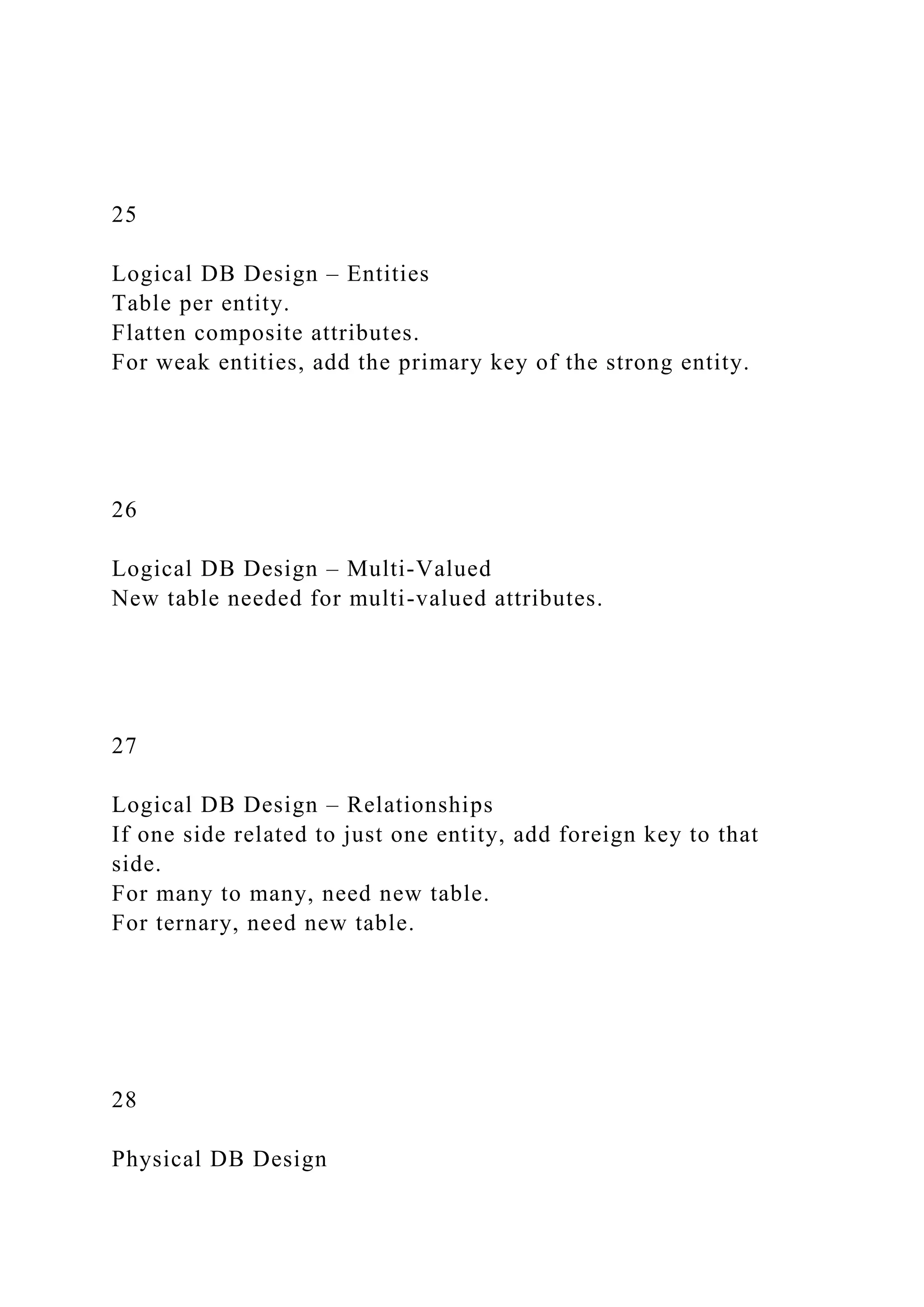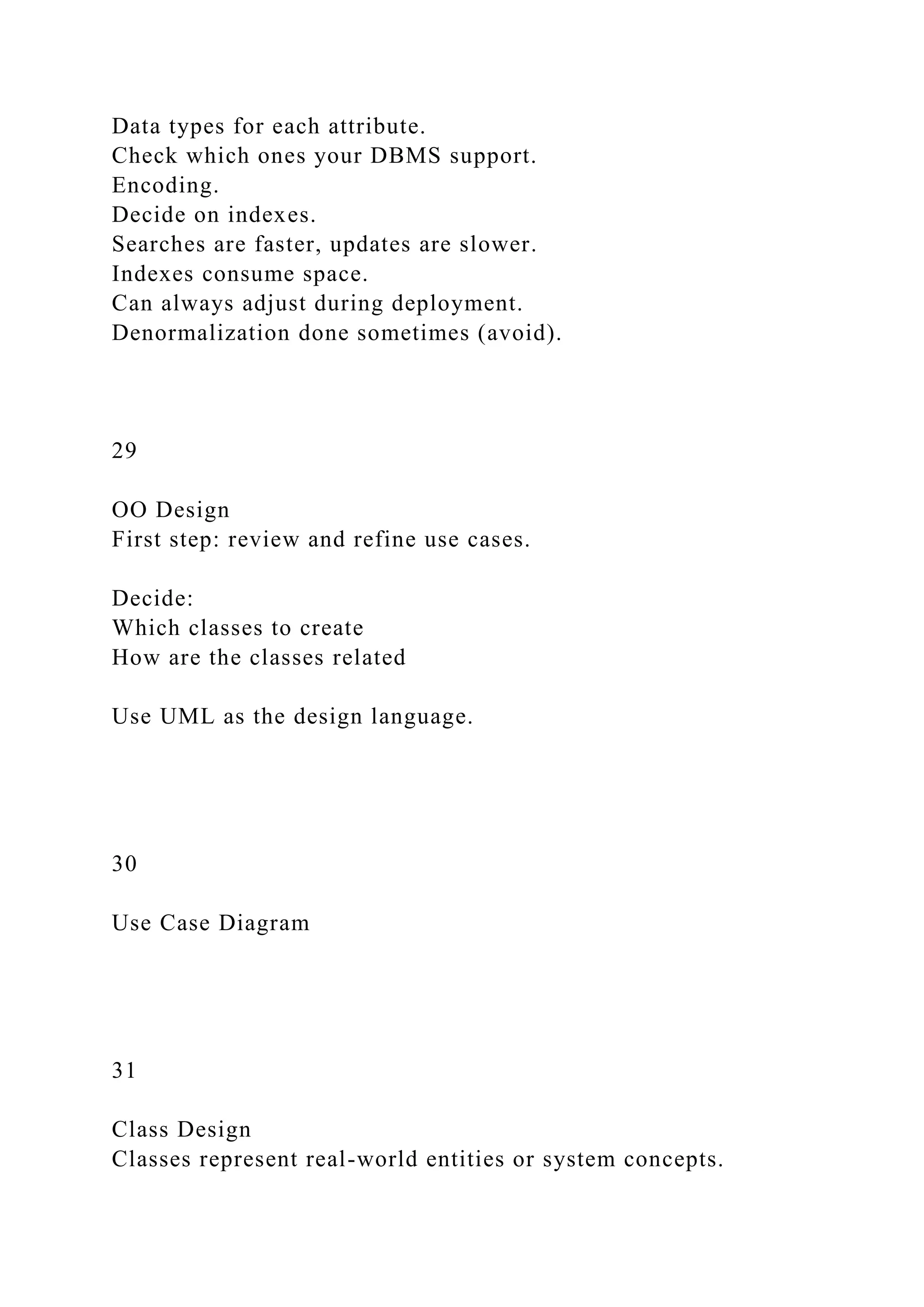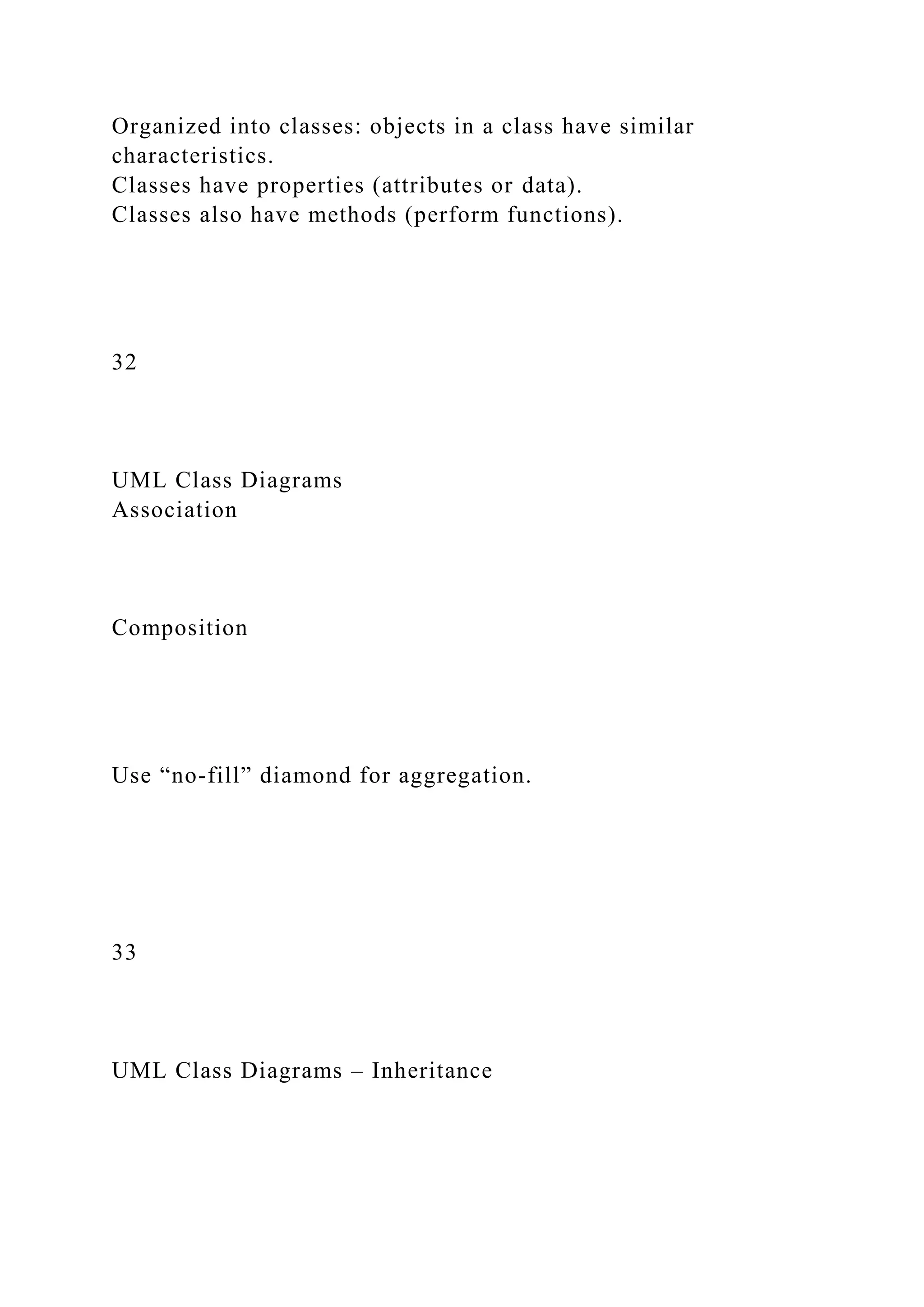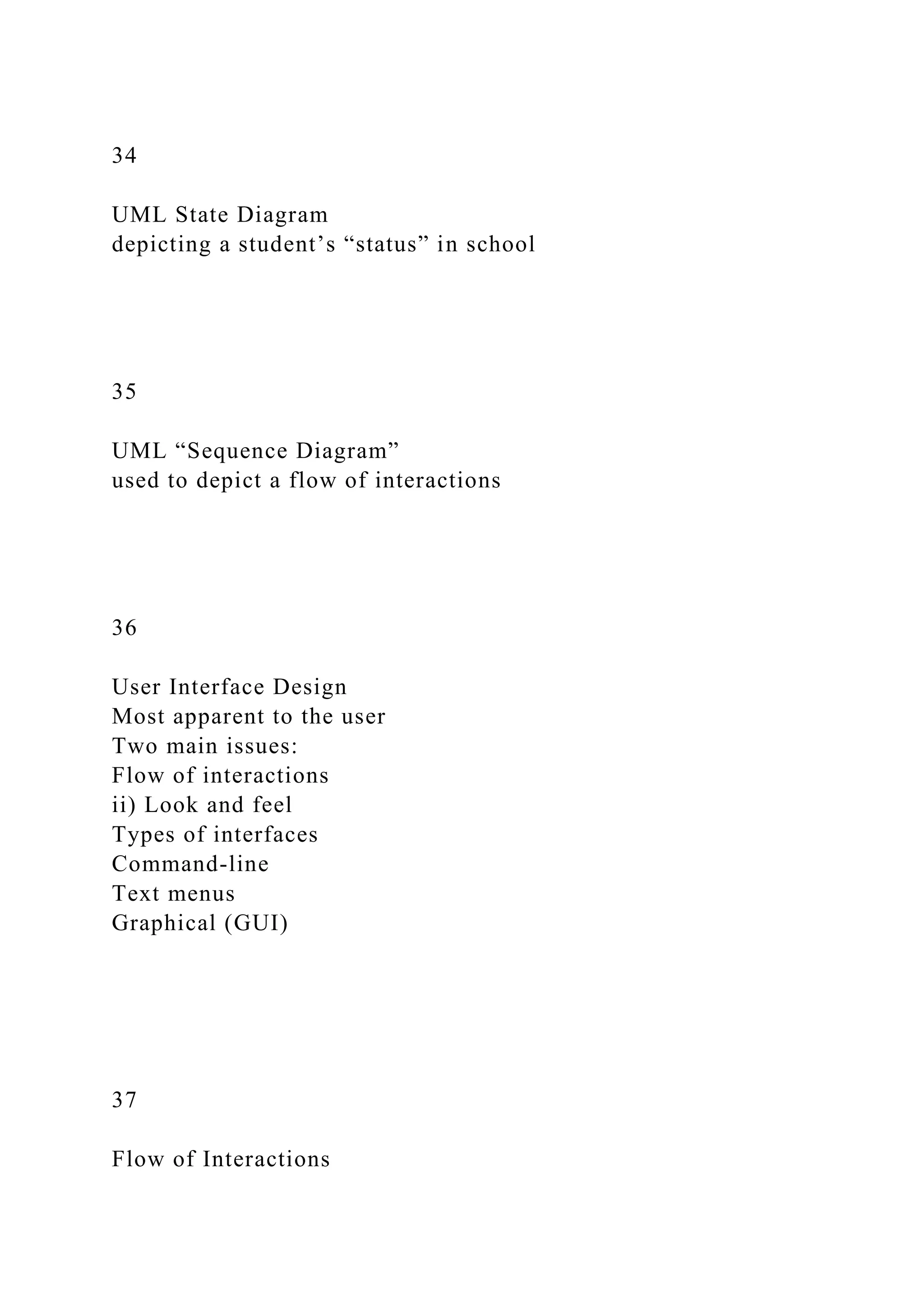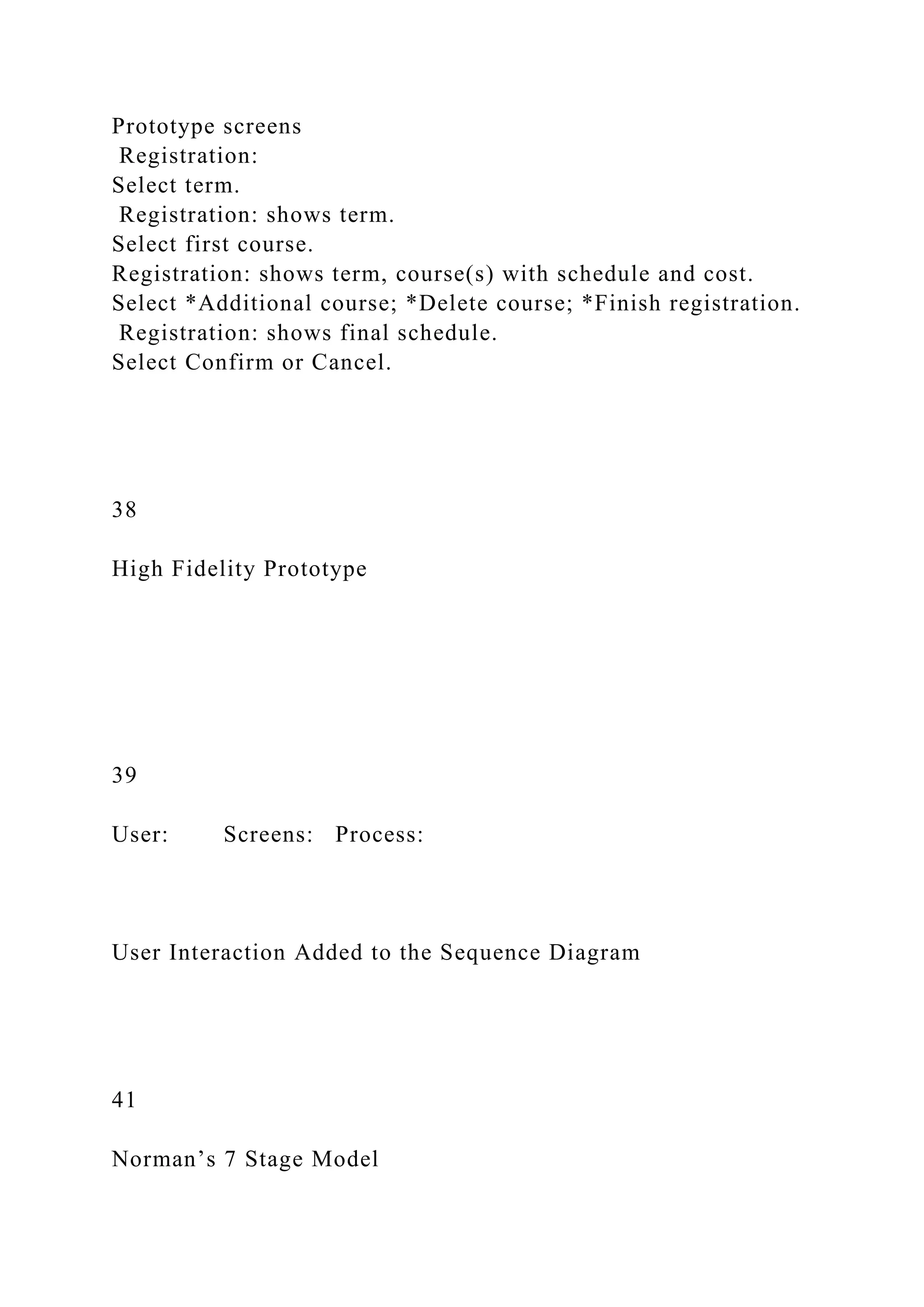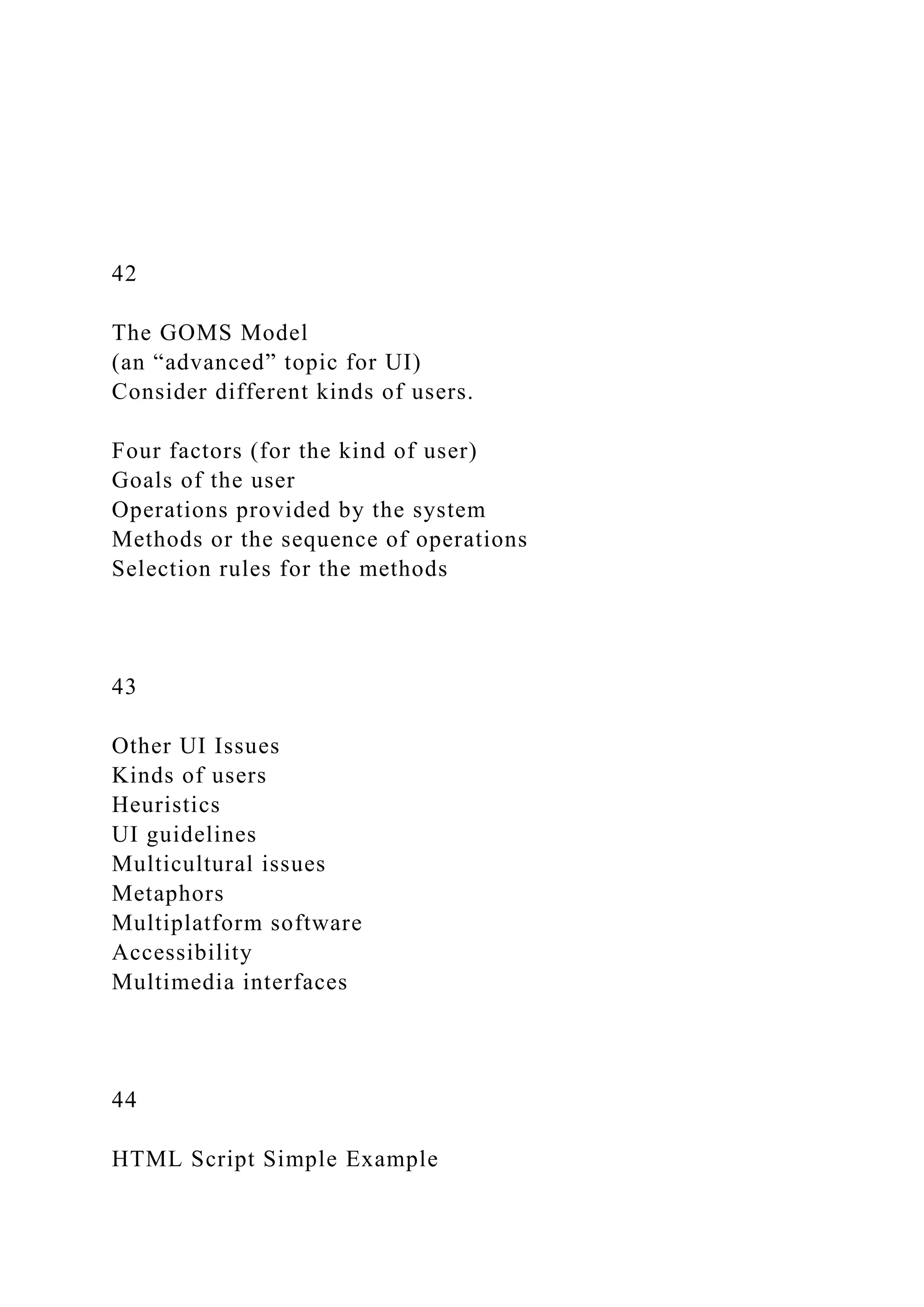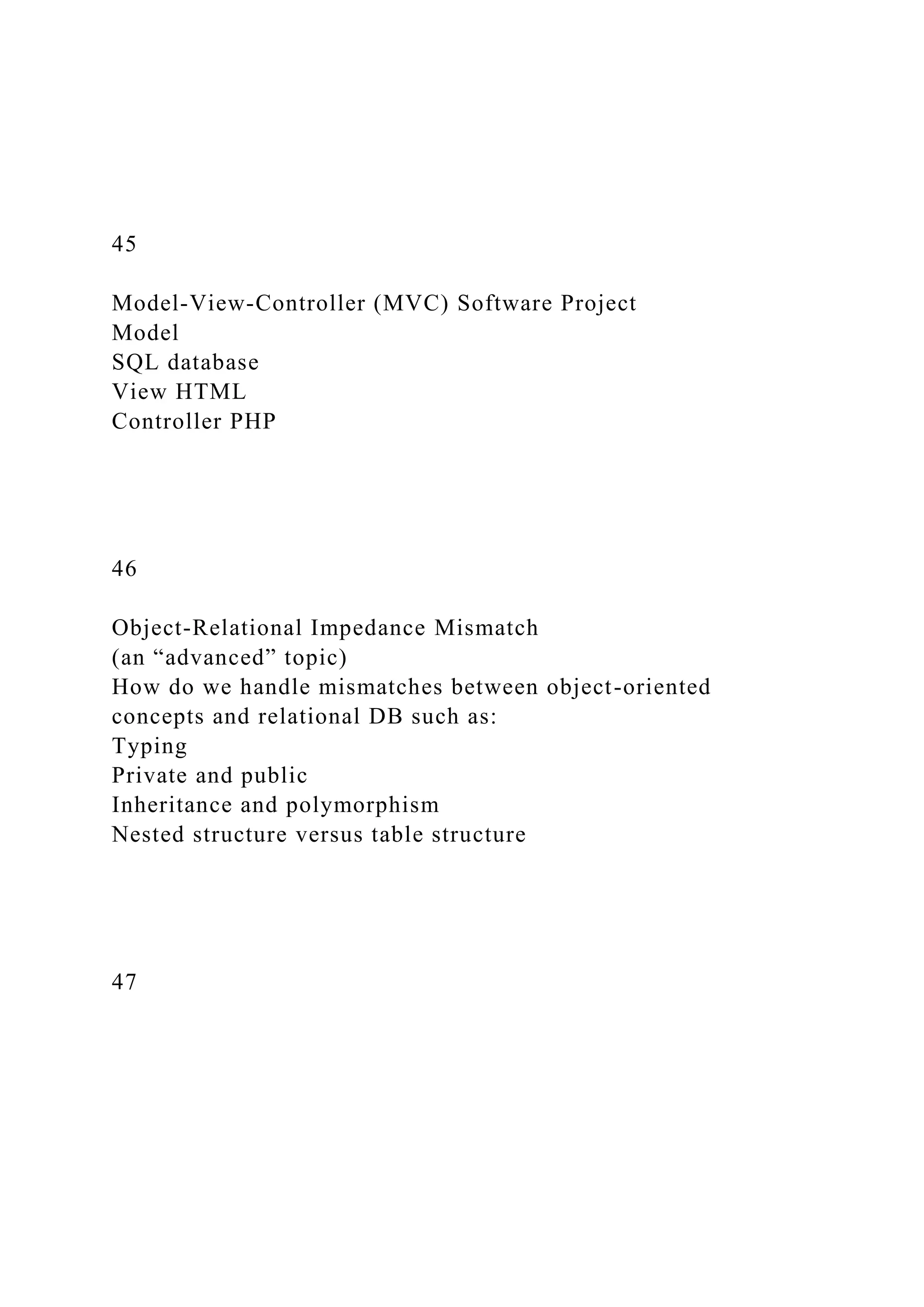Chapter 7 covers the design architecture and methodology, detailing the distinction between architectural and detailed design. It explores various architectural styles, tactics, and user-interface design considerations, along with how architecture informs detailed design choices and the importance of requirements. Additionally, it discusses relational database design, entity-relationship diagrams, and various approaches to software architecture, including MVC and client-server models.
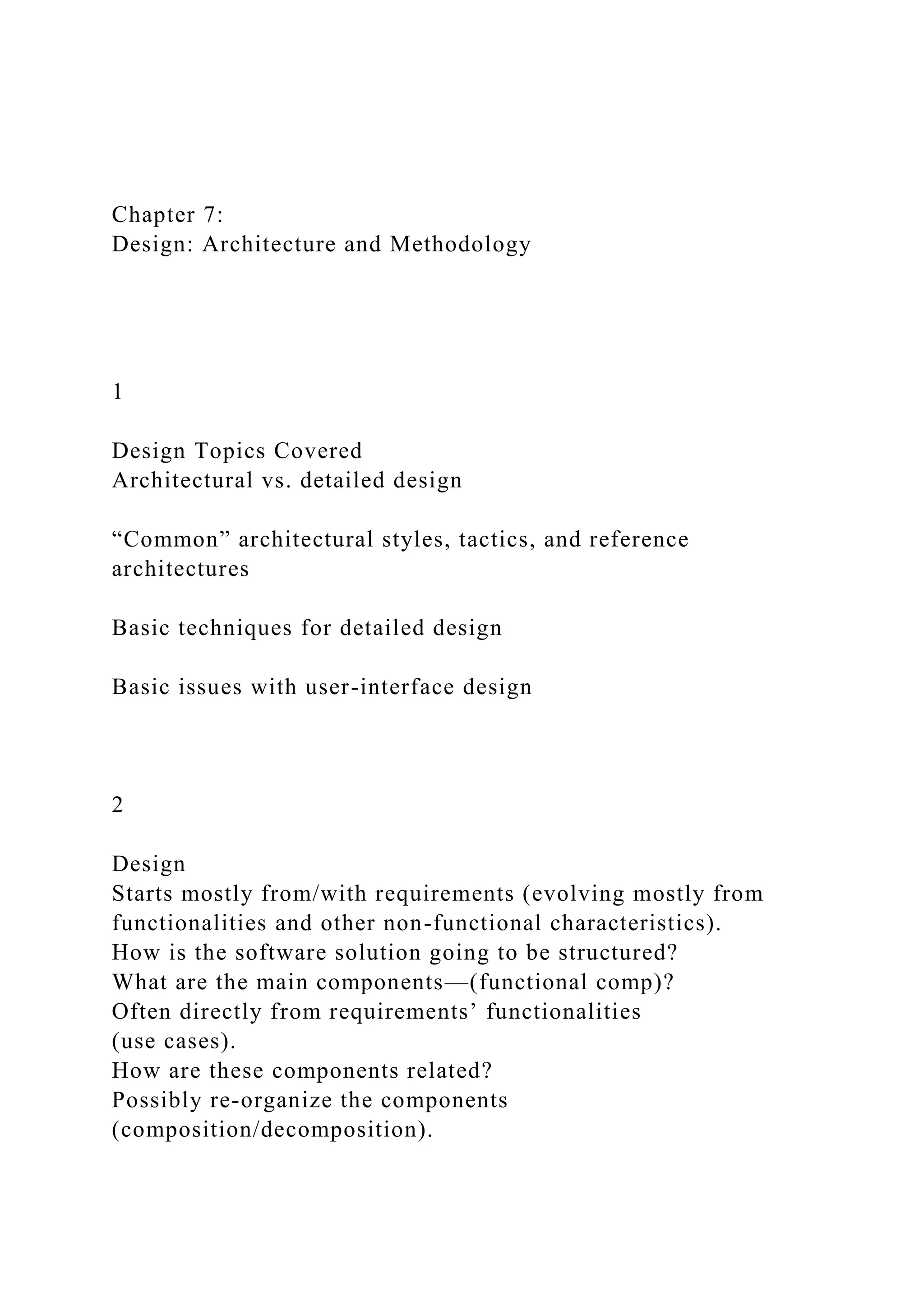

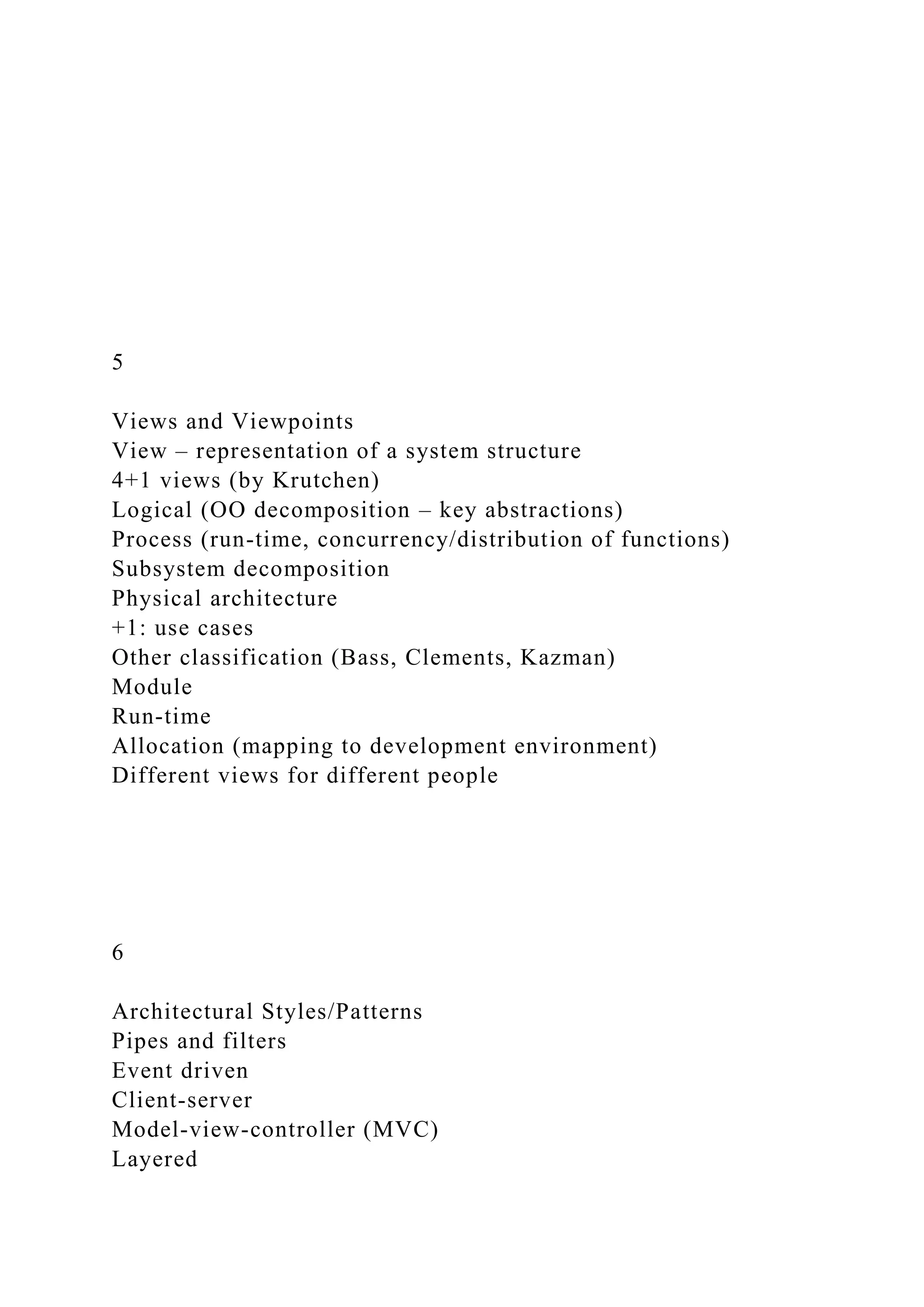
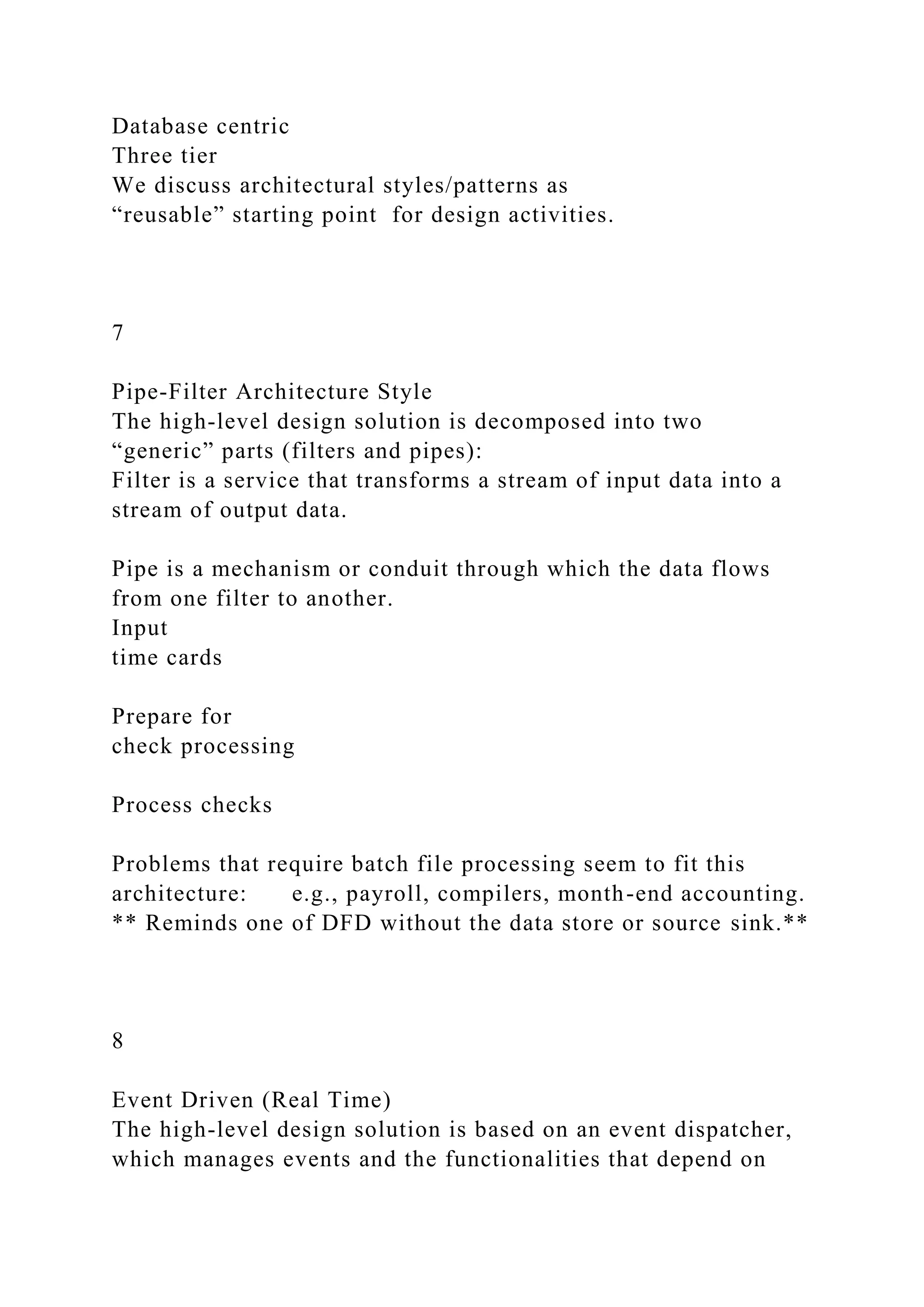
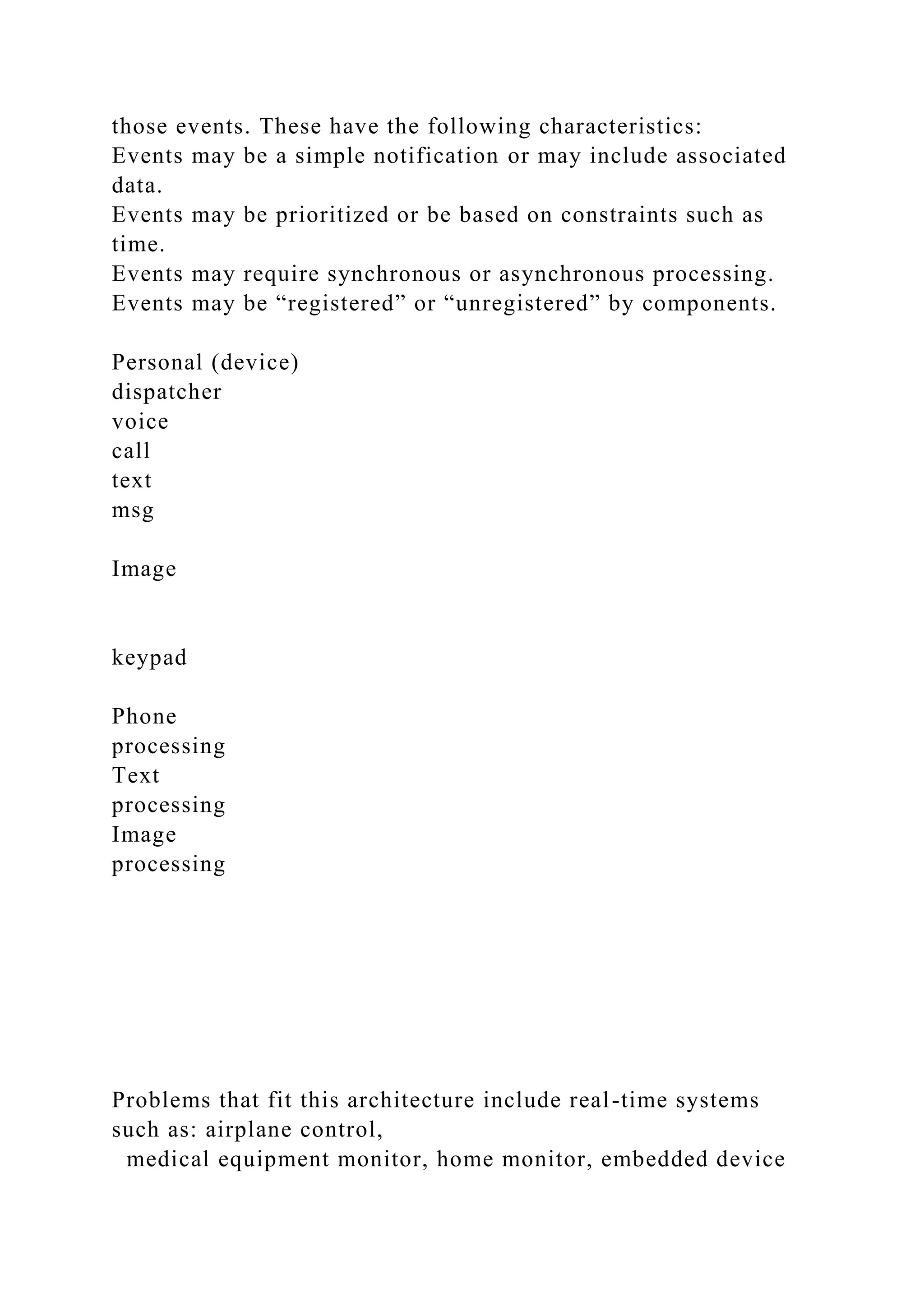
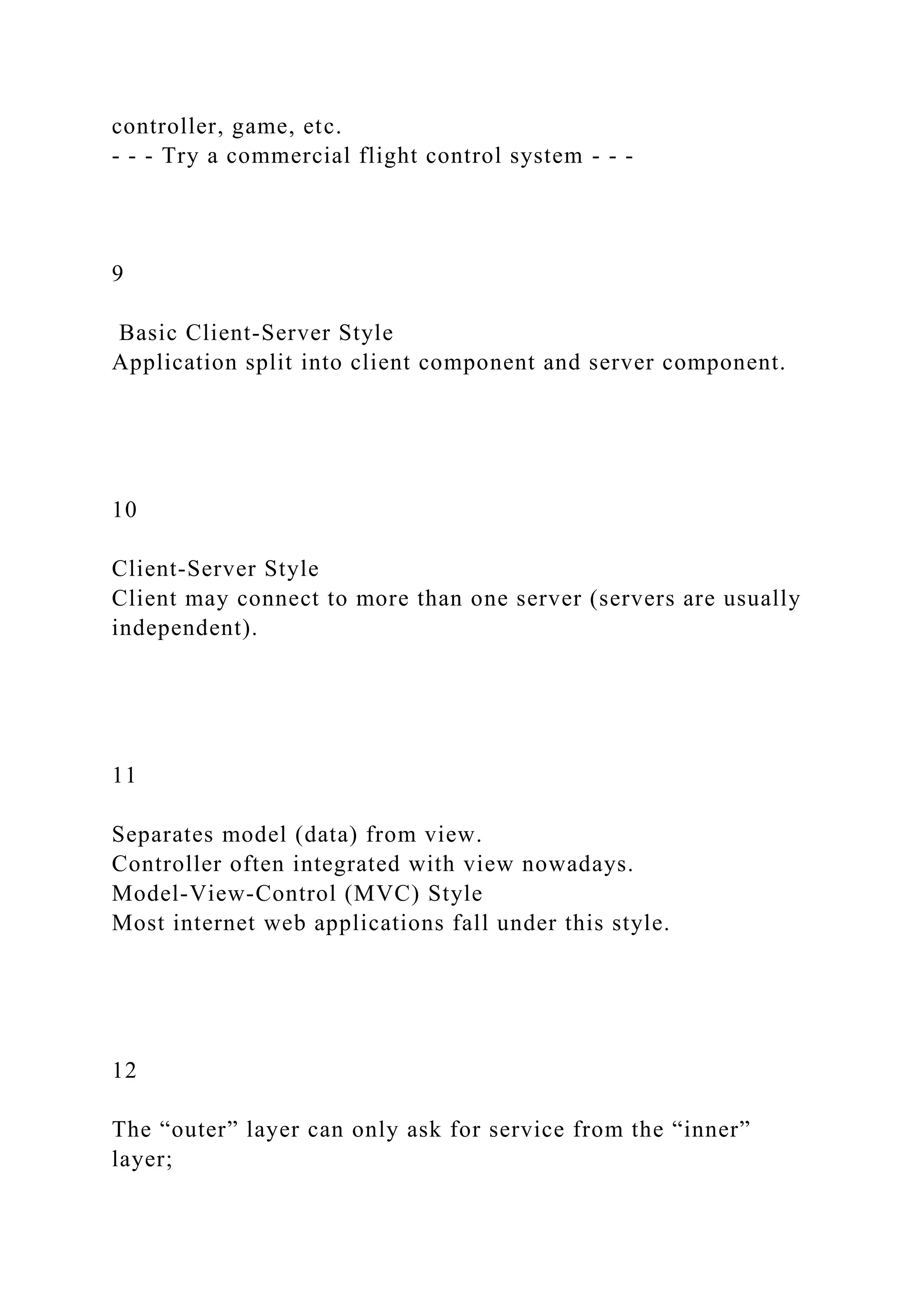
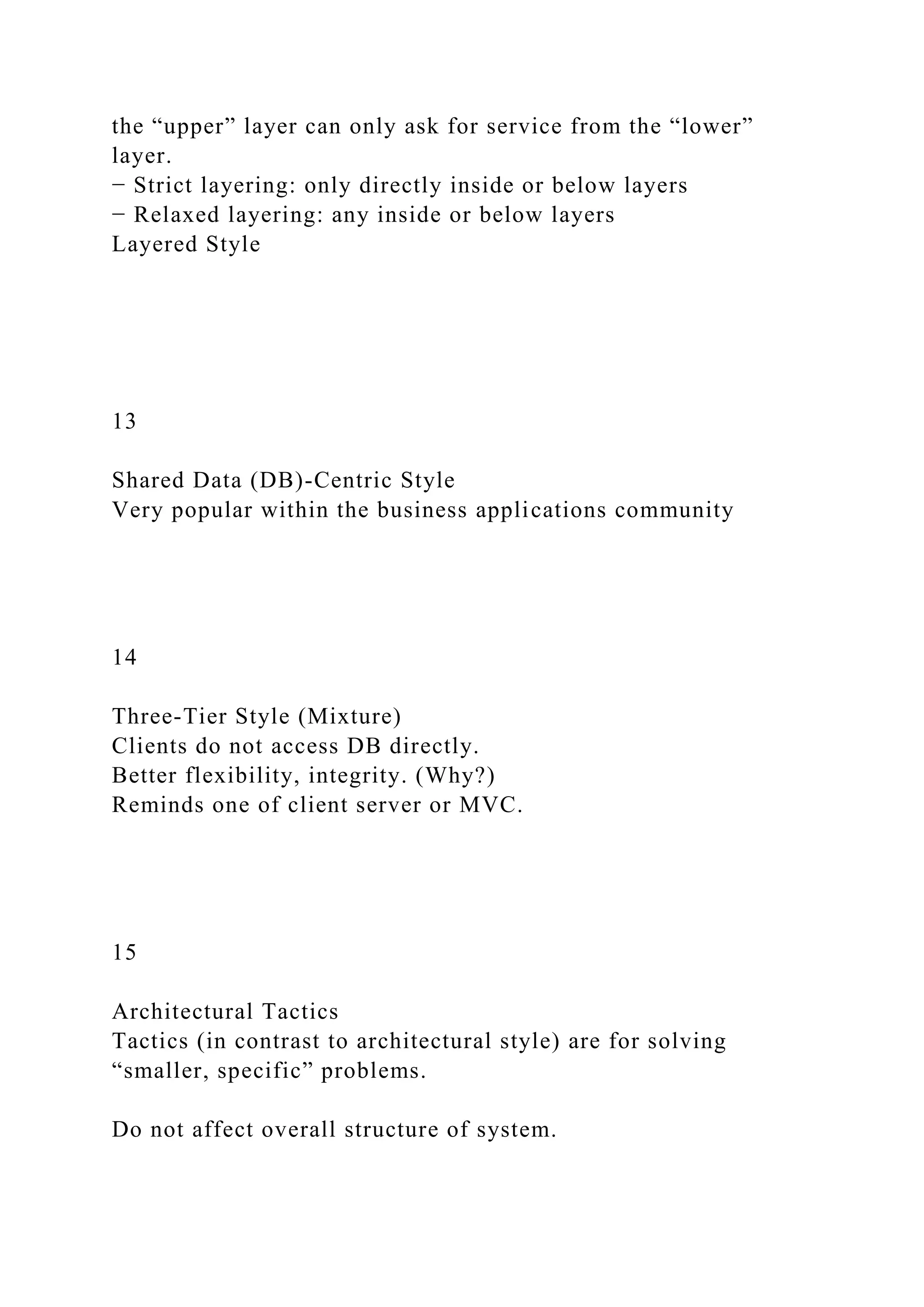
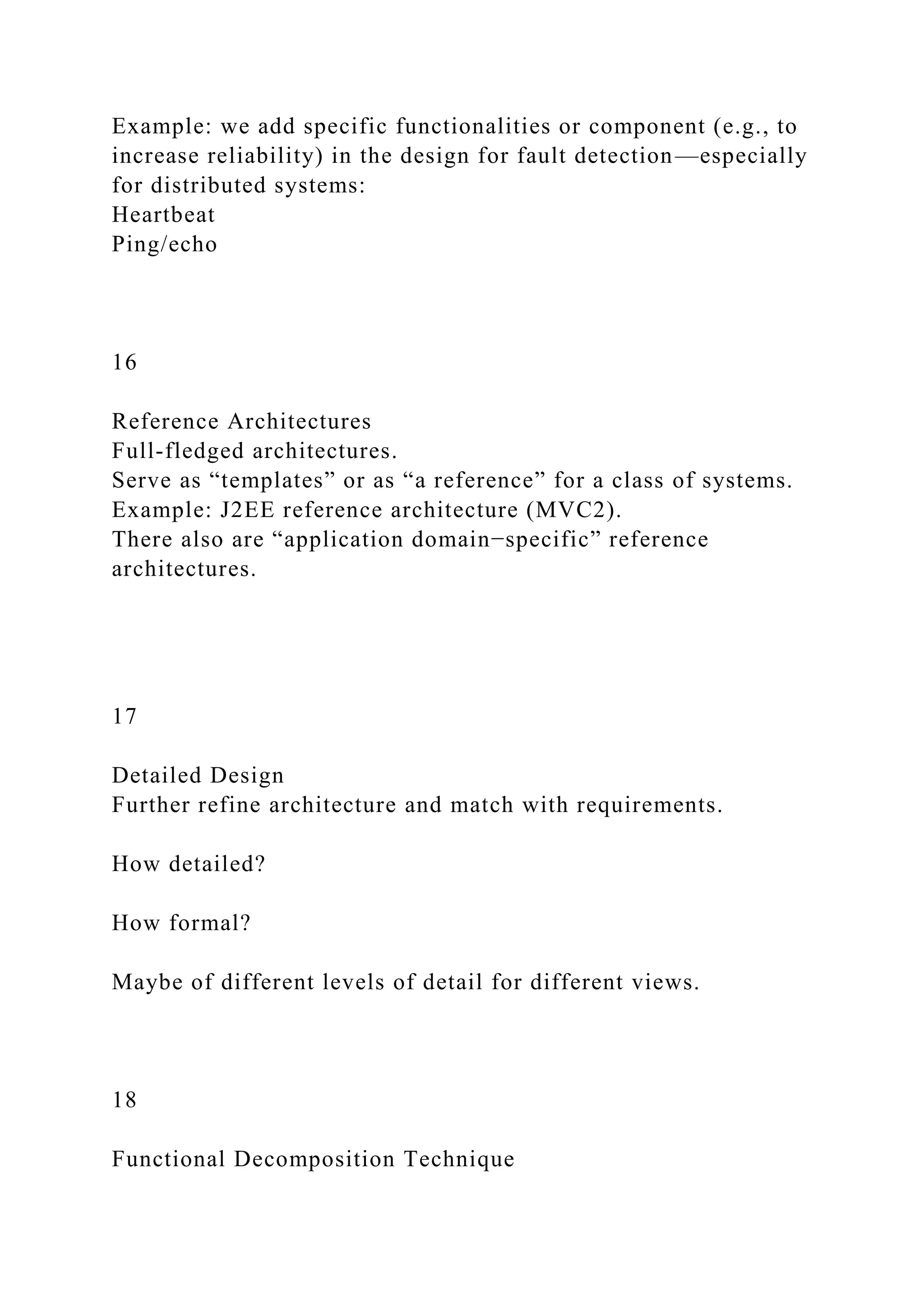
![Dates back to “structured programming”
[now (non-OO) Web apps with PHP tool].
Start with: main (task/requirements) --> module.
Refine into sub-modules.
There are alternative decompositions.
19
Possible Decomposition of
(Student-Course Management App)
20
“Alternative” Decomposition/Composition
21
Relational Database Design
Most databases use relational technology.
Relations (tables):
Two-dimensional sets
Rows (tuples), columns (attributes)
A row may be an entity; columns may be relationships or
attributes.](https://image.slidesharecdn.com/chapter7designarchitectureandmethodology1-221025160231-3e5b5557/75/Chapter-7-Design-Architecture-and-Methodology1-docx-9-2048.jpg)
